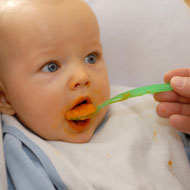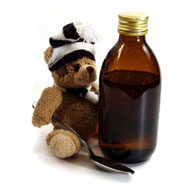- General Articles
- General Pregnancy Questions
- Baby Growth
- Pregnancy Diet
- Miscarriage
- During Pregnancy
- Twin Pregnancy
- Toddler Meals
- Home Remedies During Pregnancy
- Breastfeeding
- Pregnancy Week By Week
- Pregnancy Tests
- Ectopic Pregnancy
- Pregnancy Signs and Symptoms
- Pregnancy Stages
- Potty Training
- Fetal Development
- Preschooler
- Postpartum Depression
- Toddler Illness
- Baby Care
- After Pregnancy
- Molar Pregnancy
- During Delivery
- Beauty and Style
- Pregnancy Clothing
- Preconception
- Fertility
Food Pyramid for Toddlers
A food pyramid is basically a broad guideline that helps choose the right kind and amount of healthy food, ideal for daily consumption. The pyramid is not a strict prescription but is helpful in that, it allows each individual to design a day-to-day healthy diet, which is just right for him/her, from a variety of nutritional foods.
The food pyramid for toddlers and children is a great boon for parents who are constantly worried if their children are eating right. Statistics indicate that every third child in the United States is overweight, the main culprit being foods low in nutrients and high in saturated fat and sugar.
Accurate information on portion sizes and quantity can help parents give their toddlers healthy food, and at the same time keep a check on the amount, so that they don’t overeat (or eat too little).
The pyramid is made up of food groups and the amount you need daily from each group.
Food Groups for Toddlers
Each food group has an assortment of nutrients that share similar dietary properties. The pyramid generally contains five main food groups namely - Grains; Fruit and Vegetables; Milk or Dairy products; Meat and Beans.
Each of these food groups provide the body with vitamins, proteins, calcium, carbohydrates and other nutrients essential for growth and development of the child.
The number of servings and the daily amount that a toddler needs from each group depends on factors like, age, gender and energy/activity level. However, general recommendations from various health organizations and the government are as follows:
Fruits
Fruits contain potassium, dietary fiber, vitamins and folic acid and are naturally low in bad calories and hence form a vital part of the diet. Recommended amount of fruit each day is the equivalent of one cup in any form - fresh, raw, canned, frozen, dried, pureed or as 100% juice. Juice should make up less than half the total daily fruit intake.
Grains
Grains, the major food group in the pyramid, includes rice, wheat, oats, corn, barley, cereal grain and their products like, bread, pasta, tortillas, oatmeal, grits and breakfast cereals.
Recommended daily amount is 3 ounces of whole or refined grains. However, it is suggested that whole grains like brown or wild rice, and whole wheat or whole grain bread, crackers, pasta or tortillas, should form more than half of the diet.
Keeping an eye on the serving size is essential because even a single large bagel can equal 4 ounces. Similarly 1 to 2 cups of cooked rice or pasta may equal 2 to 4 ounces.
Vegetables
Vegetables, the second main group in any nutritious diet plan is important as they provide much needed dietary fiber and nutrients which keep serious ailments at bay. Ideally toddlers must have a variety of vegetables each day. For instance, greens like spinach, broccoli, lettuce, watercress; orange vegetables like pumpkin, carrots and winter squash; dry beans and peas like kidney beans, garbanzo beans and lentils. Intake of starchy vegetables like potatoes should be limited. The recommended amount of vegetables is a cup daily.
Milk
Not a favorite with many kids, but milk is essential for the calcium, vitamin D and proteins it delivers. Recommended amount for toddlers is 2 cups of low fat or skim milk daily. Toddlers under two however require whole milk. If it is next to impossible to get your child to have milk, it can be substituted with an equal amount of cheese and yogurt.
Meat & beans
Protein rich meat and beans are again essential for bone and muscle development. The choice in meat should be low fat and recommended amount of meat and beans for toddlers is around 2 oz. daily. Keeping in mind the child’s food allergies, it is wise to choose from a variety from this food group which includes fish, poultry, eggs, nuts, dry or cooked beans and peanut butter.
Oils
This group includes oils, fat and sugar. There is no recommended value because your child already gets these from other foods like nuts, salad dressing, fish etc. Hence it is advisable to go light on oils.
http://www.cnpp.usda.gov/mypyramidforkids.htm
Read more articles from the Toddler Meals Category.



 7 Must-Haves Before Your Baby Arrives
7 Must-Haves Before Your Baby Arrives Bonding Games for Babies
Bonding Games for Babies DIY Baby Bath Towel Apron
DIY Baby Bath Towel Apron Common Late Pregnancy Fears
Common Late Pregnancy Fears